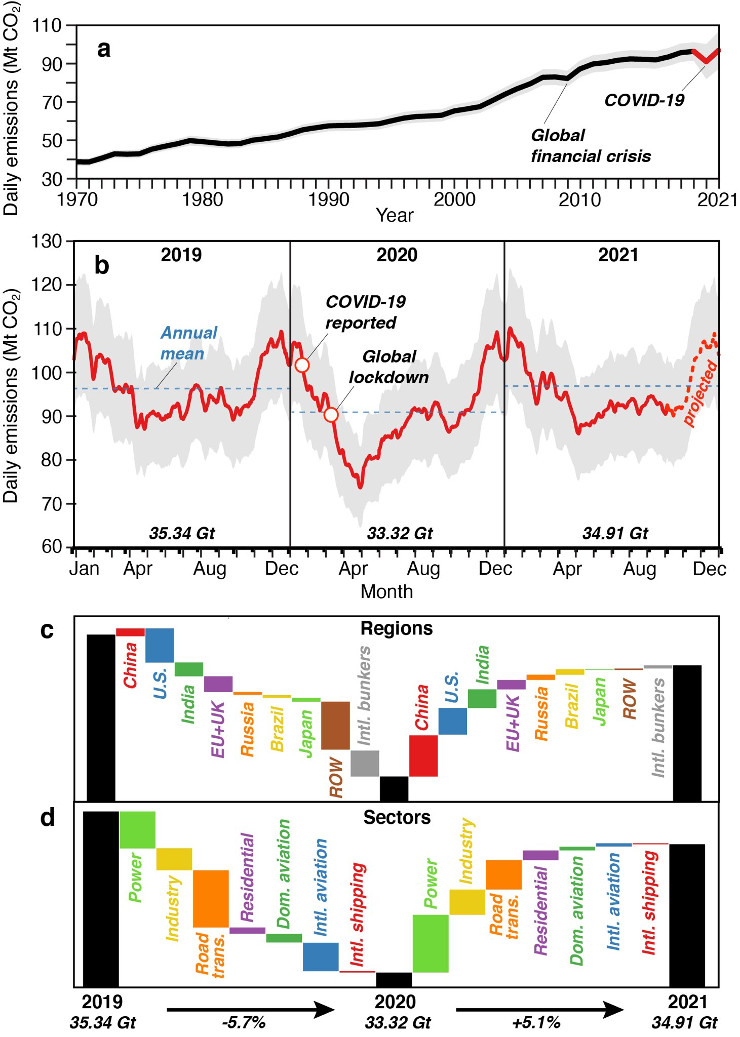In Brazil, Russia, India, and China, 2021 emissions are all up 2-9% from 2019, particularly in the electricity and industrial sectors. In contrast, in Europe and the USA, they remain 3.8-4.7% lower than in 2019, mainly due to lower emissions from the transportation sector.
The pandemic-related decline in global emissions is largely over, yet with a very uneven rebound in economic activity and emissions around the world. Energy consumption in 2021 grew too fast for targeted stimulus measures aimed at increasing the proportion of renewable energy to have had time to pay off.
Indeed, in the first nine months of 2021, the carbon intensity of electricity production increased by 3.2 percent relative to the same period in 2020. Gas prices have risen and energy demand has surged, leading to increased coal consumption. "We are seeing a race between low carbon energy sources and fossil fuels to match changes of demand," says Philippe Ciais, co-director of the Carbon Monitor project and a researcher at the LSCE. "In order to succeed in lowering CO2 emissions, any new demand will have to be satisfied by non-fossil sources."
Will annual emissions in 2021 exceed those of 2019? This is not out of the question, especially if energy demand picks up, for example with low temperatures this fall.
Unlike estimates of carbon dioxide emissions that rely on fossil fuel balances which are available after months, sometimes years, of lag, Carbon Monitor tracks activities and energy consumption from a variety of sources in near real-time, especially air and road traffic and electricity production.
The researchers have published several articles detailing their methods and a short document explaining their latest results on the EarthArXiv preprint server.
This work was coordinated by the University of California Irvine (USA) and conducted in collaboration with Tsinghua University (China), Columbia University in New York, and the Chinese Academy of Sciences.
Carbon monitor
